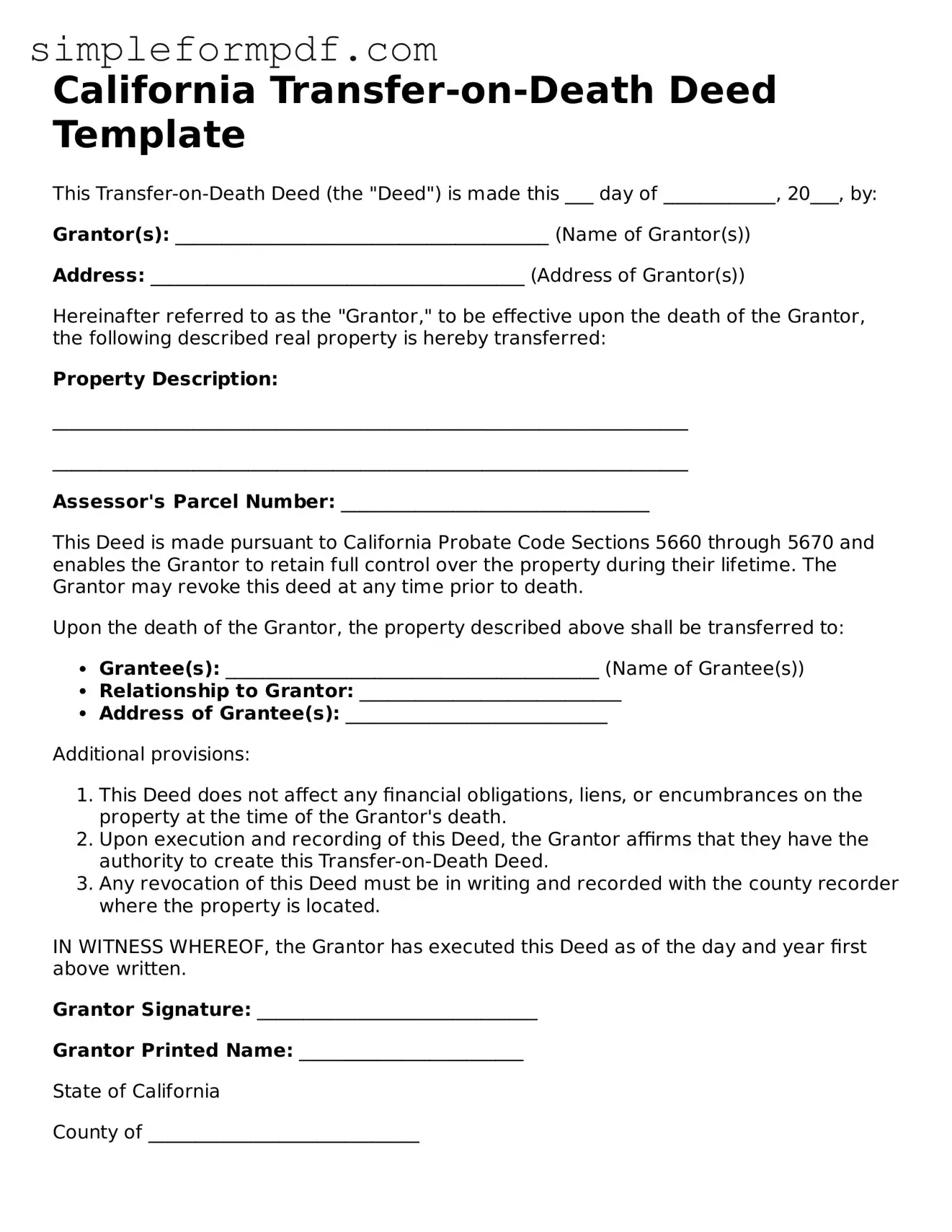California Transfer-on-Death Deed Template
This Transfer-on-Death Deed (the "Deed") is made this ___ day of ____________, 20___, by:
Grantor(s): ________________________________________ (Name of Grantor(s))
Address: ________________________________________ (Address of Grantor(s))
Hereinafter referred to as the "Grantor," to be effective upon the death of the Grantor, the following described real property is hereby transferred:
Property Description:
____________________________________________________________________
____________________________________________________________________
Assessor's Parcel Number: _________________________________
This Deed is made pursuant to California Probate Code Sections 5660 through 5670 and enables the Grantor to retain full control over the property during their lifetime. The Grantor may revoke this deed at any time prior to death.
Upon the death of the Grantor, the property described above shall be transferred to:
- Grantee(s): ________________________________________ (Name of Grantee(s))
- Relationship to Grantor: ____________________________
- Address of Grantee(s): ____________________________
Additional provisions:
- This Deed does not affect any financial obligations, liens, or encumbrances on the property at the time of the Grantor's death.
- Upon execution and recording of this Deed, the Grantor affirms that they have the authority to create this Transfer-on-Death Deed.
- Any revocation of this Deed must be in writing and recorded with the county recorder where the property is located.
IN WITNESS WHEREOF, the Grantor has executed this Deed as of the day and year first above written.
Grantor Signature: ______________________________
Grantor Printed Name: ________________________
State of California
County of _____________________________
On this ___ day of ___________, 20___, before me, a Notary Public, personally appeared ________________________________________ (Name of Grantor), known to me (or proved to me on the basis of satisfactory evidence) to be the person who executed the within instrument and acknowledged that they executed the same.
WITNESS my hand and official seal.
Notary Public Signature: ________________________
Notary Public Printed Name: ___________________
My Commission Expires: _______________________________
